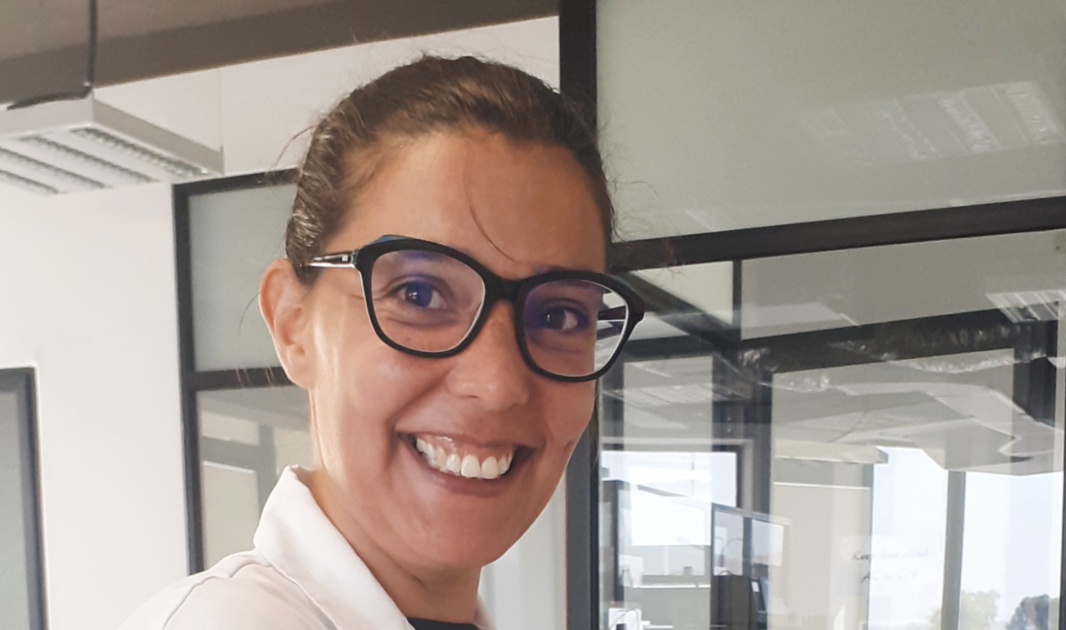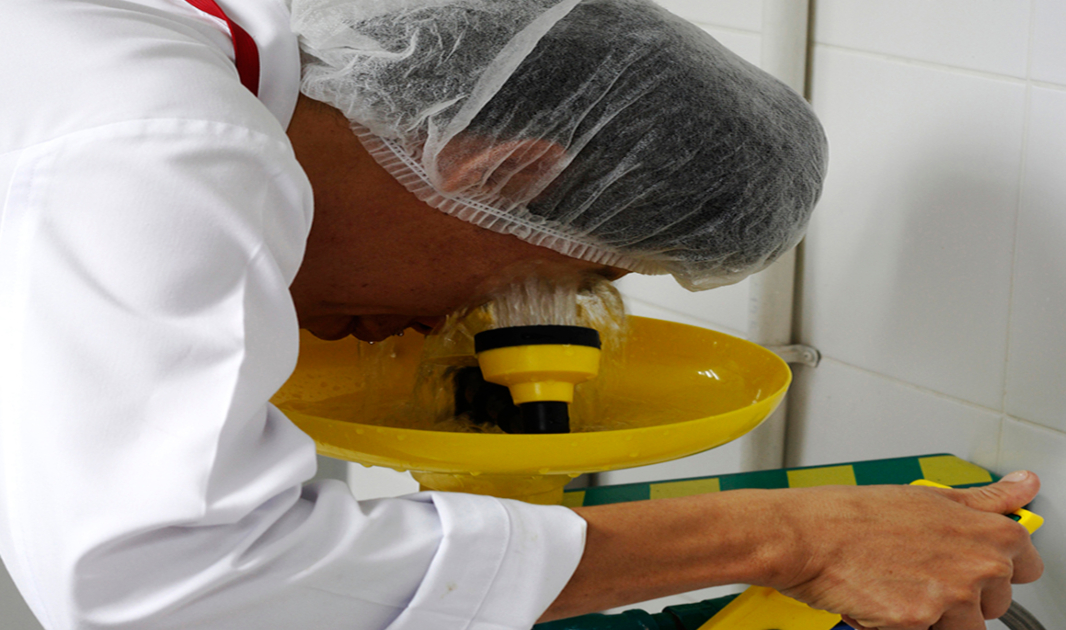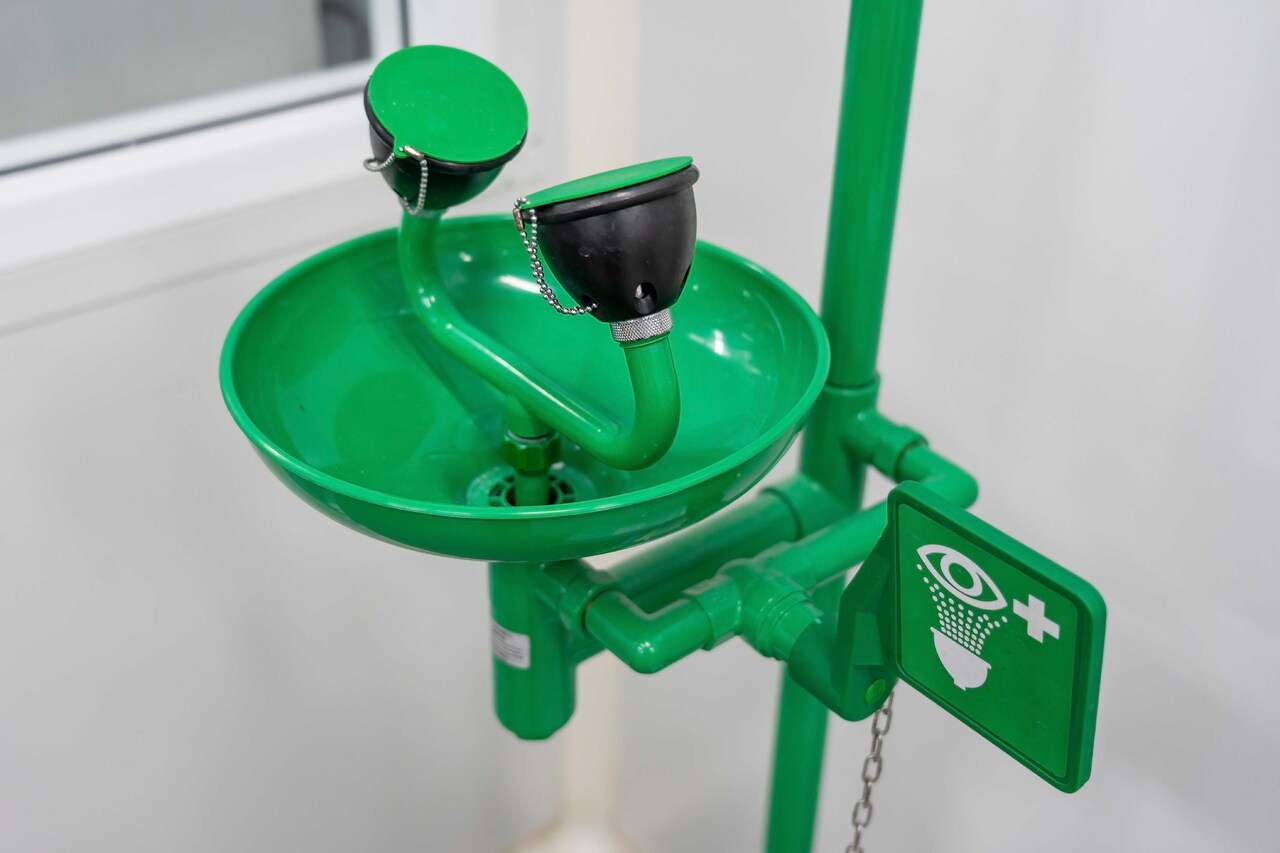When it comes to an emergency, seconds count – especially when there are potential eye injuries.
At Evolve, we offer emergency eye wash equipment with a variety of installation options, from wall mounted eye wash stations, to pedestal eyewash stations, to freestanding eye wash units.
Eye wash stations from Evolve are ideally suited to laboratories, factories, warehouses, workshops, foundries, petrol stations, chemical plants, garages or any workplace where hazardous chemicals are used.
Experienced lab manager Tania Teixeira, pictured below, is a business development executive at Evolve. She said: ‘Laboratory eyewash stations provide emergency decontamination for the eyes and face. If a hazardous substance enters or interacts with your eyes, you can use an emergency eyewash station to flush it out immediately.
‘Eyewash stations in laboratories should only be used for emergencies. When conducting experiments, you should first rely on personal protective equipment, such as safety specs. When it comes to something as precious as the eyes, it is important to ensure they are protected. Maintain your eyewash station, make sure it’s in good working order, and train your colleagues on its proper use and care.’

How does an eyewash station work?
Laboratory eye stations provide a continuous flow of water through two spouts to flush a person’s eyes in an emergency. Distilled, purified, or tap water can be used. No special filters are necessary. The water used in an eyewash station is usually cold or room temperature.
The pressure of the water used in an eyewash station must be high enough for the water to flow up into the eyes. However, there is no standard flow rate required. How the unit is built and installed will determine the water pressure.
Where should an eyewash station be located in a lab?
Eyewash stations are usually located by an existing sink to make use of the same drain. This makes deck-mounted eyewash stations a popular choice. Stand-alone eyewash stations come with their own sink and drain, so they are often located elsewhere. Eyewash station bowls can be stainless steel or plastic.
The user should never have to walk down or up a flight of stairs to reach decontamination equipment – it should be installed on the same floor as the hazard, no more than a 10-second walk away. The walking route that the user takes to the shower or wash station should be clear of obstructions, and the area surrounding the emergency equipment should be well lit.

How to use an eyewash station
Don’t delay
The second a hazardous material enters your eyes, you should make your way to an eyewash station. Don’t hesitate, even if it’s only a minor spill – the longer a hazardous substance is in contact with the eye, the more damage it does. Even small amounts of contamination can cause serious injury and even permanent loss of vision.
Activate the unit
Push the activation lever on the eyewash station. When the lever has been pushed, the dust covers will pop open and each of the two eyewash nozzles will begin discharging water.
Flush out your eyes
Once activated, the eyewash station will continue to discharge water for a minimum of 15 minutes, meaning that it can be operated hands-free. Using your fingers to keep your eyelids open, lower your eyes into the stream of water issuing from the nozzles. Roll your eyes gently up and down and from side to side, ensuring that the water reaches as much of the eyeballs as possible.
Contact lenses
If you wear contacts, gently remove them once you have begun the flushing process. While failing to remove contact lenses can prevent the eye wash from properly irrigating the eyes, it is important not to delay flushing in order to take them out. Only do this once flushing has begun.
Keep on flushing
Continue to use the eyewash station in this manner for a full 15 minutes, and no less. This is the minimum amount of time that it takes to sufficiently clear the eyes of harmful chemicals – if you remove your eyes from the stream before this time has elapsed, you run the risk of permanent injury.
After flushing
When the 15 minute flushing period is over, seek medical assistance immediately. Have a colleague drive you to the accident and emergency department of your local hospital. Do not be tempted to drive yourself, as your vision may be impaired.

What is an emergency shower?
Emergency showers provide decontamination of a person’s entire body in laboratory settings through rinsing and drenching. Specific parts of the body may be targeted for emergency rinsing with the help of a detachable drench hose.
Types of safety showers
Safety showers typically fit in one of three categories:
- Free standing emergency showers: Mounted directly to the floor
- Vertical mounted emergency showers: Mounted directly to the ceiling; may be partially concealed in a finished ceiling
- Horizontal mounted emergency showers: Mounted directly to the wall; may include a detachable drench hose
Emergency showers may be installed with a drain. However, because most labs have epoxy or other highly durable flooring, cleaning up standing water is fairly easy and carries little risk of damage.
Why buy an eyewash station from Evolve?
Our team at Evolve is proud to offer state-of-the-art safety station products from the world’s scientific equipment manufacturers. We are a one-stop shop for all of your laboratory safety needs. Contact us today to get started. We look forward to hearing from you.
You might also be interested in
Be the first to hear our latest news, ideas and initiatives from Evolve
Laboratory equipment and more
Whatever your next step, we’ll be by your side. Evolve is Malta’s fastest-growing science company, offering laboratory design, the widest range of lab chemicals, scientific consultancy services and medical equipment from internationally-trusted brands.
We offer a comprehensive range of scientific equipment and medical supplies, shaped to suit the needs of hospitals, clinics, heritage sites, school labs, universities and pharmaceutical companies in Malta, Europe, Africa and the Middle East.
To find out about how Evolve can help you take your next step, get in touch with us today.


